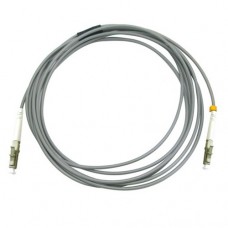Ensuring communications remain available is vital during a disaster. If workers in the office lose the internet because of a tornado, the business disruption is a problem, but not nearly as much of an issue as it would be if communications go down completely. Installing cabling architectures that interconnect with telecom infrastructure is a key part of a construction process, and how these systems are deployed can impact communications availability during a disaster. Having alternative network options that can provide emergency communications can also help, ensuring that emergency services can be contacted in the event of a disaster event.
Simplex OM2 50/125 Multimode Fiber Optic Patch Cable
Installing cables to ensure free movement through a building
A poor cabling setup can lead to major problems when disasters strike. Loose wires can clump together, blocking doors, hallways and other areas, preventing people from getting out of a building to escape or into a structure to rescue any trapped individuals. Meeting high standards for safety, including regulations from OSHA and national fire codes can provide a solid foundation for safe and well-designed cable deployment. However, it is important to also consider the quality of the components that keep cables in place and how the wiring systems are laid out in the building to ensure they do not become obstructions during a disaster.
Cabling installation methods could mean the difference between life and death during a disaster. When a tornado or hurricane hits an area, employees must be able to get to safety, or get help, as quickly as possible. Cables that get in the way can be a detriment to this process, but a well-designed system will not only stay out of the way, it could help keep key communication channels available.
Post time: Aug-16-2019

